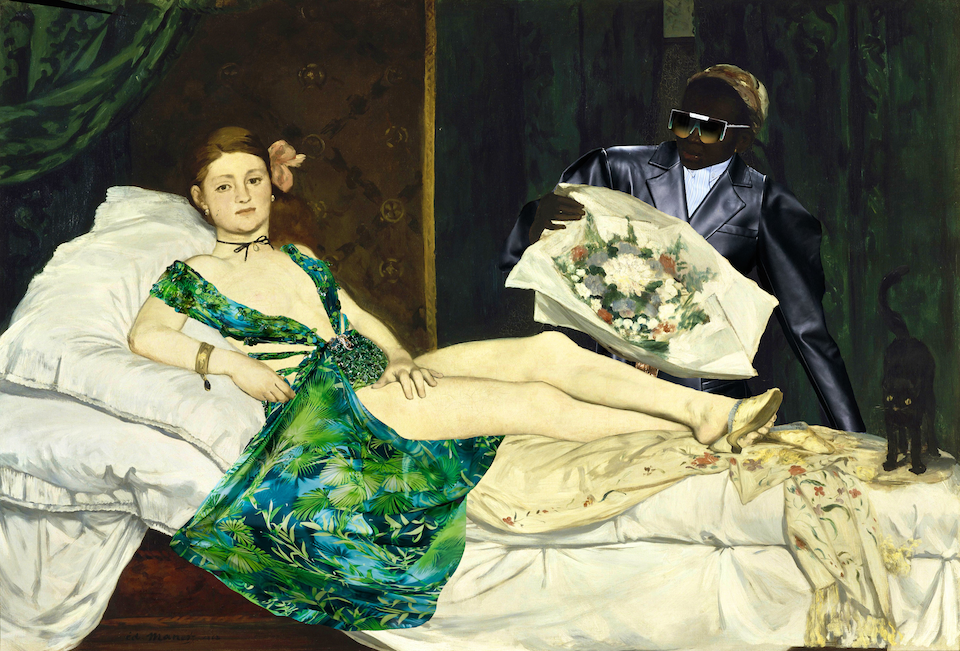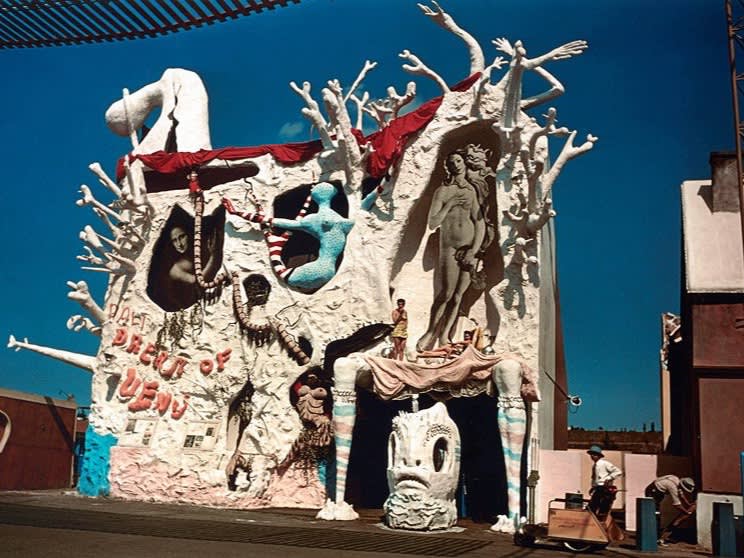
Tristan Tzara and Pablo Picasso
Portada À Haute Flamme, 1955
Artists have always turned to everyday life for sources of inspiration. Linking the blank page to the familiar canvas, many artists have designed and published their own books. The artist’s book utilizes the form and function of the book to create an artistic work. In utilizing bookmaking, a centuries-old tradition, artist’s books modernize the past and look to the future. Often, artists use innovative techniques to format and bind such books, turning them into a transformative work that goes beyond simple words on a page. These books use text, illustration, and unique proportions to portray the artist’s message in an interpretive way. The relative ease of printing and distributing books compared to other mediums suggests that artist’s books are a means of creating an attainable art form.
One of the most important figures in twentieth century art, Parisian art dealer Ambroise Vollard spent his days supporting and publishing early artist’s books. Vollard is credited with providing exposure for artists such as Paul Cezanne, Pierre-Auguste Renoir, Pablo Picasso, Paul Gaugin, and Vincent van Gogh. Many of these artists created their own illustrated books, providing a fascinating minimalist glimpse into the artists’ message and style.
Paul Cezanne
Artist Book, Published by Ambroise Vollard, 1914
Paul Cezanne
Artist Book, Published by Ambroise Vollard, 1914
Paul Cezanne
Artist Book, Published by Ambroise Vollard, 1914
Paul Cezanne
Artist Book, Page, 1923
La vie et l'oeuvre de Pierre-Auguste Renoir
Published by Ambroise Vollard 1900s
La vie et l'oeuvre de Pierre-Auguste Renoir
Published by Ambroise Vollard, 1900s
La vie et l'oeuvre de Pierre-Auguste Renoir
Published by Ambroise Vollard 1900s
Artist’s books come in a wide array of shapes and styles depending on the individual artist, time of publication, and purpose. Henri de Toulouse-Lautrec created an innovative version of an artist’s book in 1894, titled “Yvette Guilbert.” Named for the famed cabaret singer, the artist’s text and illustrations demonstrate his fascination with the public realm, especially theaters and cafes. Similarly, Paul Gaugin’s artist book from the same year, titled “Noa Noa,” acts as an illustrated travel journal depicting Gaugin’s time in Tahiti, which would inspire much of his work. The book was intended as a companion to Gaugin’s art exhibits, providing tangible context to his work within a gallery setting. While the book was not completed in time for his art show, Noa Noa provides intimate details of the artist’s travels which would go on to inform his work. Similarly, Jean-Michel Basquiat filled composition notebooks with his own drawings and handwritten texts. Many of the imagery and word choice in these notebooks can be seen in much of Basquiat’s later works including crowns, teepees, hearts, notes, and poems touching on race, class, and New York City. These notebooks demonstrate much of the interest and intent behind Basquiat’s work, allowing a rarely-seen glimpse into the mind of the artist.
Henri de Toulouse-Lautrec
Yvette Guilbert, 1894
Henri de Toulouse-Lautrec
Yvette Guilbert, 1894
Paul Gauguin
Noa Noa, 1894
Paul Gauguin
Noa Noa, 1894
Paul Gauguin
Noa Noa, 1894
Jean-Michel Basquiat
The Notebooks, 1980s
Jean-Michel Basquiat
The Notebooks, 1980s
Jean-Michel Basquiat
The Notebooks, 1980s
Jean-Michel Basquiat
The Notebooks, 1980s
Jean-Michel Basquiat
The Notebooks, 1980s
Jean-Michel Basquiat
The Notebooks, 1980s
Jean-Michel Basquiat
The Notebooks, 1980s
Much like monks of the Middle Ages would illuminate words in religious texts to emphasize importance, Henri Matisse began similarly illustrating books following a major surgery in 1941. His first book, Poems, was filled with line art illustrations that imbued the text with additional meaning. Other works by Matisse included collage, most notably the brilliantly bold and colorful 1947 book Jazz. Pablo Picasso imbued his artist’s books with significant political statements. Picasso’s A haute flamme, made in collaboration with Tristan Tzara, used text and imagery to speak out about the Nazi occupation of Paris during World War II. Picasso’s Sueño y mentira de Franco, published in 1937, utilized a comic book format, with individual panels dividing the illustrations to tell a linear story.
Pablo Picasso
Sueño y mentira de Franco, 1937
Pablo Picasso
Sueño y mentira de Franco, 1937
Pablo Picasso
Sueño y mentira de Franco, 1937
Tristan Tzara and Pablo Picasso
A Haute Flamme, 1955
Tristan Tzara and Pablo Picasso
A Haute Flamme, 1955
Tristan Tzara and Pablo Picasso
A Haute Flamme, 1955
Salvador Dalí’s autobiography can be considered an artist’s book in itself, but Dalí also produced numerous publications on art theory, drawing from geometry, physics, mysticism, and the Old Testament to create illustrated works. Dalí’s Alchemy of the Philosphers was sold in a two-volume box set, including 10 prints of the artist’s drawings. Dalís innovative reinvention of traditional iconography within his illustrations transforms these works from books to works of art that allow for interpretation. In the 1960s and 70s, American pop artist Ed Ruscha created a series of artist’s books. Small in size and featuring bright text and bold photographs, works like Twentysix Gas Stations and Every Building on the Sunset Strip balanced the line between the artistic and the commercial. Andy Warhol similarly made a series of books, often featuring the artist’s own sketches and drawings. With playful titles like Cats, Cats, Cats and Shoes, Shoes, Shoes, the works resemble children’s books with slightly skewed details like upside down text. Through these simplistic works, artists like Warhol and Ruscha collided books with the world of pop art.
Salvador Dalí
Alchemy of the Philosophers, 1976
Salvador Dalí
Alchemy of the Philosophers, 1976
Salvador Dalí
Alchemy of the Philosophers, 1976
Salvador Dalí
Alchemy of the Philosophers, 1976
Salvador Dalí
Alchemy of the Philosophers, 1976
Salvador Dalí
Alchemy of the Philosophers, 1976
Henri Matisse
Le Clown (Plate 1), Jazz, 1947
Henri Matisse
Le Clown (Plate 1), Jazz, 1947
Ed Ruscha
Twenty Six Gasoline Stations, 1963
Ed Ruscha
Every Building on Sunset Strip, 1966
Andy Warhol
Cats Cats Cats, 1997
Andy Warhol
Cats Cats Cats, 1997
Andy Warhol
Cats Cats Cats, 1997
Andy Warhol
Cats Cats Cats, 1997
Andy Warhol
Shoes, Shoes, Shoes, 1980s
Other artist’s books feature only the illustrations of the artist, with text coming from an external source. Marc Chagall’s illustrations for Dead Souls, comissioned by art dealer and publisher Ambroise Vollard, fills the story with additional meaning through Chagall’s masterful use of color and balance of biblical narratives with imaginative imagery. Joan Miró worked alongside surrealist poet Paul Éluard, as well as playwright Alfred Jarry, to create illustrated images as part of collaborative works. For Miró, there is no distinction between the poetry of text and the poetry of art. Rather than simply illustrating the text, Miró’s drawings leant additional perspective to the stories. Robert Delaunay’s 1918 painting for Vicente Huidobro’s poetry book, Tour Eiffel, became one of the most famous and frequently reproduced paintings of the Eiffel Tower. Similarly, Alexander Calder’s 1931 illustrations for Aesop’s Fables added a simplistic, childish intrigue to a well-known tale. The work of these artists transformed simple books into works of art. These illustrations provided additional meaning that enhanced the text, especially when imbued with a specific artist’s vision.
Marc Chagall
Les Âmes mortes (Dead Souls), 1948
Marc Chagall
Les Âmes mortes (Dead Souls), 1948
Marc Chagall
Les Âmes mortes (Dead Souls), 1948
Marc Chagall
Les Âmes mortes (Dead Souls), 1948
Marc Chagall
Les Âmes mortes (Dead Souls), 1948
Marc Chagall
Les Âmes mortes (Dead Souls), 1948
Joan Miró
À Toute Épreuve, Paul Éluard, 1958
Joan Miró
À Toute Épreuve, Paul Éluard, 1958
Joan Miró
À Toute Épreuve, Paul Éluard, 1958
Joan Miró
À Toute Épreuve, Paul Éluard, 1958
Robert Delaunay
Tour Eiffel, 1918
Robert Delaunay
Tour Eiffel, 1918
Robert Delaunay
Tour Eiffel, 1918
Aesop's Fables
Illustrations by Alexander Calder, 1931
Aesop's Fables
Illustrations by Alexander Calder, 1931
Aesop's Fables
Illustrations by Alexander Calder, 1931
Aesop's Fables
Illustrations by Alexander Calder, 1931
The world of fashion has often looked to fantastical stories for inspiration. Whether directly referencing stories and characters, or drawing inspiration from the endless possibilities of a closed book, there is no small amount of fashion that has its roots in the literary world. For Fall/Winter 2011, Prabal Gurung drew inspiration from Charles Dickens’ Great Expectations. Inspired by Ms. Havisham, the lonely widow character, the collection featured off-the-shoulder dresses, feathers, and broken-down furs, adding hints of disheveled madness to the red carpet-favorite’s collection. The brand Olympia Le-Tan, founded in 2009, is famous for its minaudières, clutches and handbags that are made to look like sculptural books. Recognizable titles like Lolita and Moby Dick are sold alongside more playful embroidery that resemble composition notebooks. The ingenious combination of embroidery and literature make for a fun, fascinating, and unique style.
Helena Bonham Carter
Miss Havisham in new Great Expectations
Prabal Gurung
Fall/Winter 2001
Prabal Gurung
Fall/Winter 2001
Prabal Gurung
Fall/Winter 2001
Prabal Gurung
Fall/Winter 2001
Prabal Gurung
Fall/Winter 2001
Olympia Le Tan
Moby Dick Clutch
Olympia Le Tan
Lolita Clutch
For some designers, the obsession with books peeks through into every aspect of their career. Karl Lagerfeld, well known for his large personal library, imbues literature into many of his collections. In Fall 2016, Lagerfeld leant his literary knowledge to Fendi’s Couture collection, with garments drawing clear inspiration from classic book covers. Some designers have even made their own version of the artist’s book. Raf Simons’ 2003 book The Fourth Sex was made to accompany the designer’s 2003 Pitti collection. The book explores youth culture and the love of extremes, using photos and artworks to demonstrate examples. This take on the artist’s book resembles the work of Salvador Dalí—a kind of artist’s manifesto in words and pictures.
Fendi
F/W 2016 Couture
Fendi
F/W 2016 Couture
Fendi
F/W 2016 Couture
Fendi
F/W 2016 Couture
Fendi
F/W 2016 Couture
Fendi
F/W 2016 Couture
Raf Simons
The Fourth Sex, 2003
For bibliophiles, a place to properly store one’s books is almost as important as the texts themselves. Furniture designers and artists alike have taken to creating unique storage solutions that balance functionality with decoration, allowing book-lovers to proudly display their collection as a work of art. Bookcases come in a variety of shapes and sizes, from low table-sized models to full ceiling height shelving. Bookshelves can be freestanding or affixed to a wall, and are sometimes even custom built to fit a specific space. They can sometimes be fitted with glass doors to protect fragile copies or first additions. Throughout his career, Frank Lloyd Wright designed various bookshelf styles, some permanently built into the spaces he designed. Like much of his work, Wright’s bookshelves masterfully fit into their surrounding space, lending decoration as well as function. Modernist designer Charlotte Perriand, along with atelier Jean Prouvé, made two distinct bookcase styles. The “Mexique,” designed in 1954, is representative of midcentury modern furniture. Its powerful construction allows for functionality while its design is almost sculptural in nature. Made of pine and steel, the Mexique bookcase is a colorful patchwork that anyone could proudly display their precious literary treasures on. Made around the same time, the “Antony” bookshelf was a wall-mounted design originally made for student housing at universities. Perriand determined the measurements for the Antony shelf by carefully considering what a university student might need to store. Both designs show attention to craftsmanship as well as artistic intention.

Frank Loyd Wright
Custom Bookcase in a home Rockford, Illinois
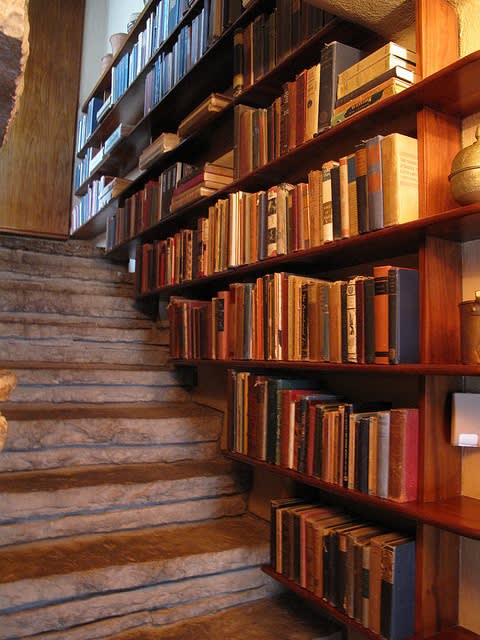
Frank Lloyd Wright
Bookcase and Stone Stairway
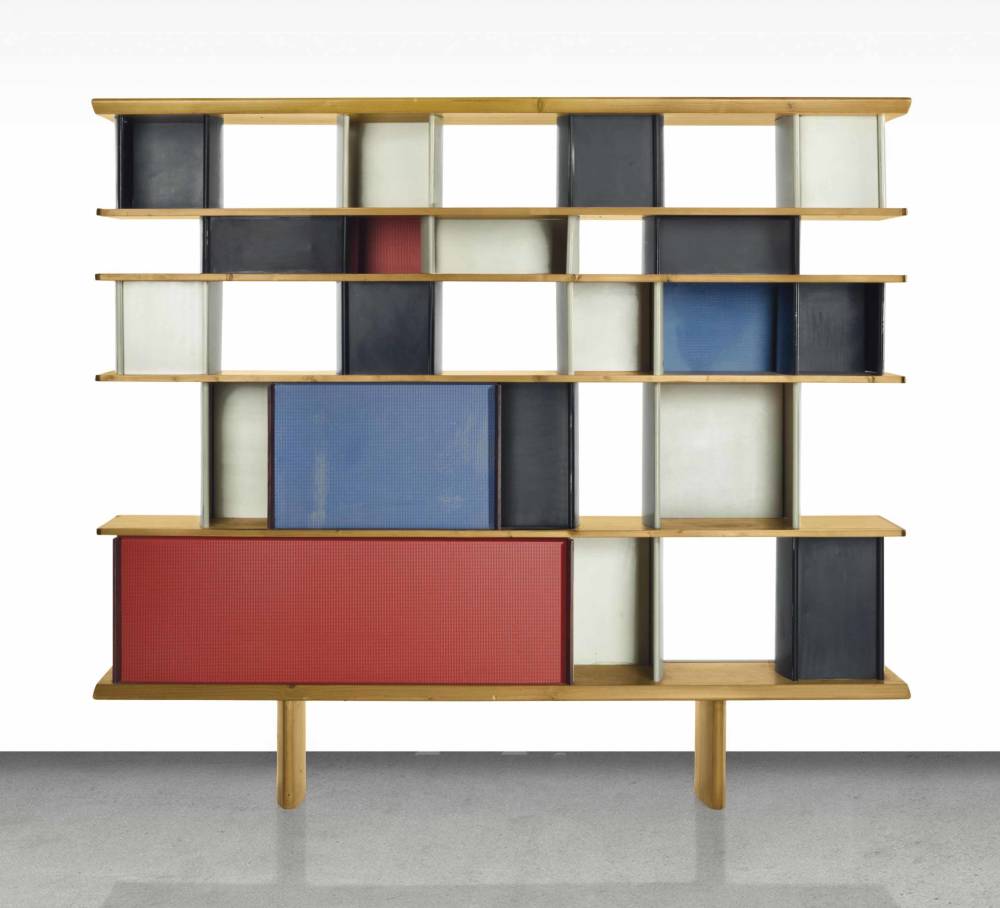
Charlotte Perriand and Jean Prouvé
Mexique, 1954

Charlotte Perriand and Jean Prouvé
Mexique, 1954
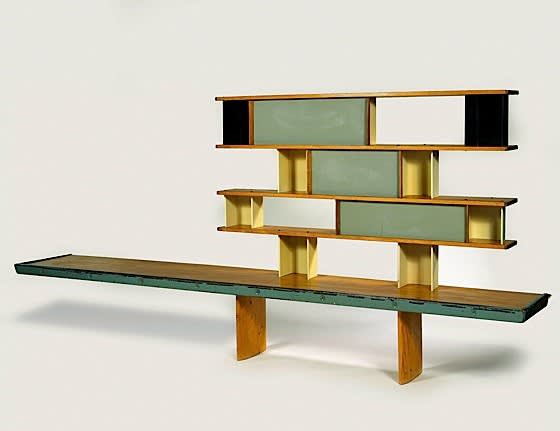
Charlotte Perriand and Jean Prouvé
Mexique, 1954
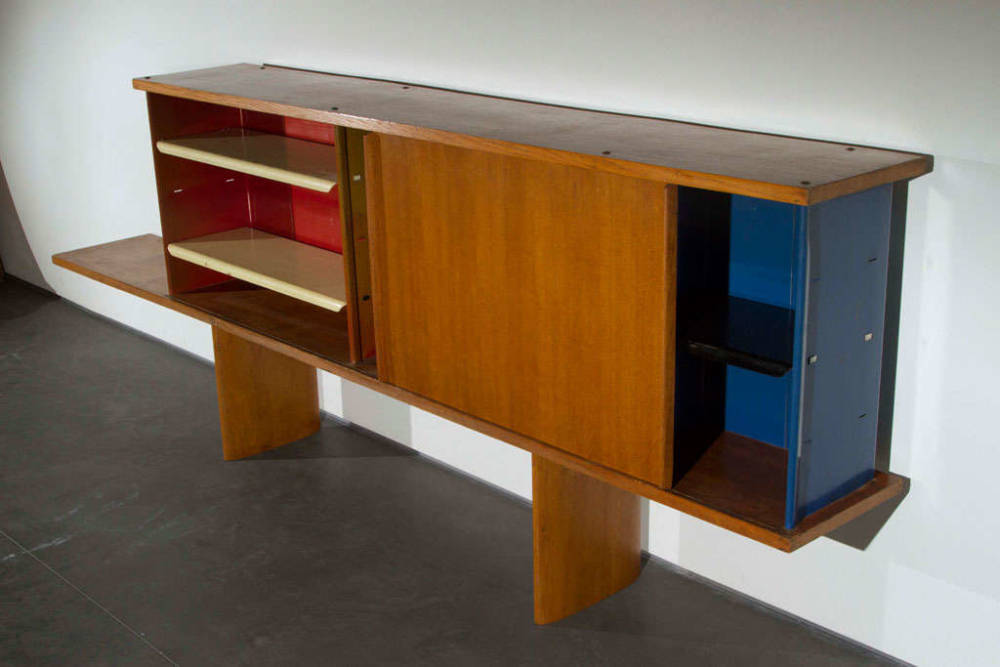
Charlotte Perriand and Jean Prouvé
Antony Bookcase, 1954
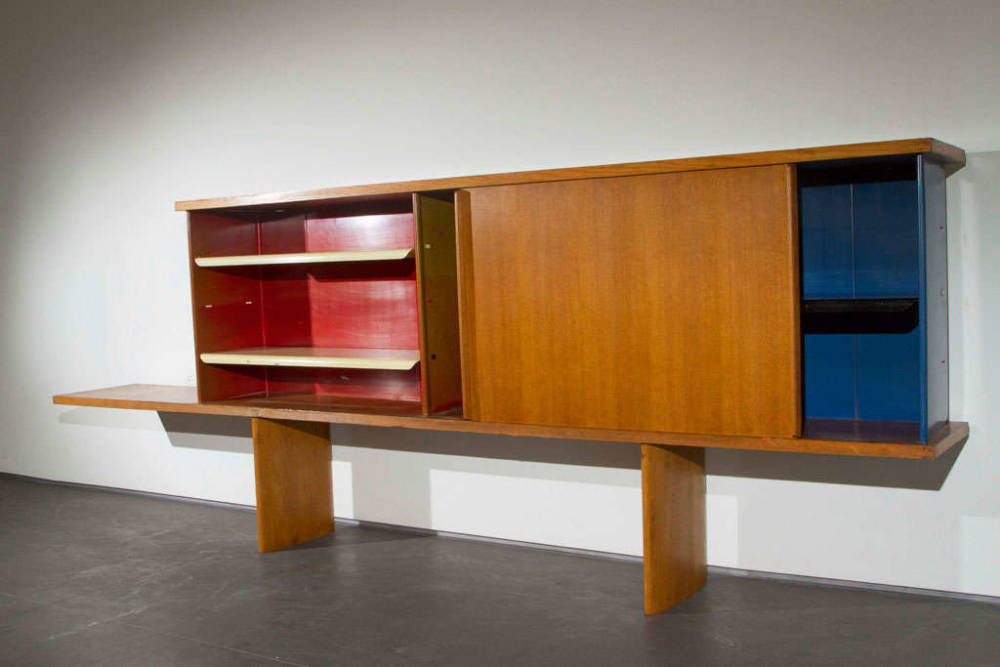
Charlotte Perriand and Jean Prouvé
Antony Bookcase, 1954
Ettore Sottsass took the sculptural idea even further. His “Carlton” bookshelf, designed in 1981, also functions as a room divider. The colorful shelves and seemingly impossible balance lend an element of whimsy to an otherwise simple household item. Gaetano Pesce, an Italian pioneer of contemporary architecture and design, created several bookshelves throughout his career from 1939 through 2003. Intentionally imperfect design, ragged edges, and paint splattering details make Pesce’s pieces almost alien-like. Pesce utilizes modern materials like polyurethane resin to create these unique sculptural designs.
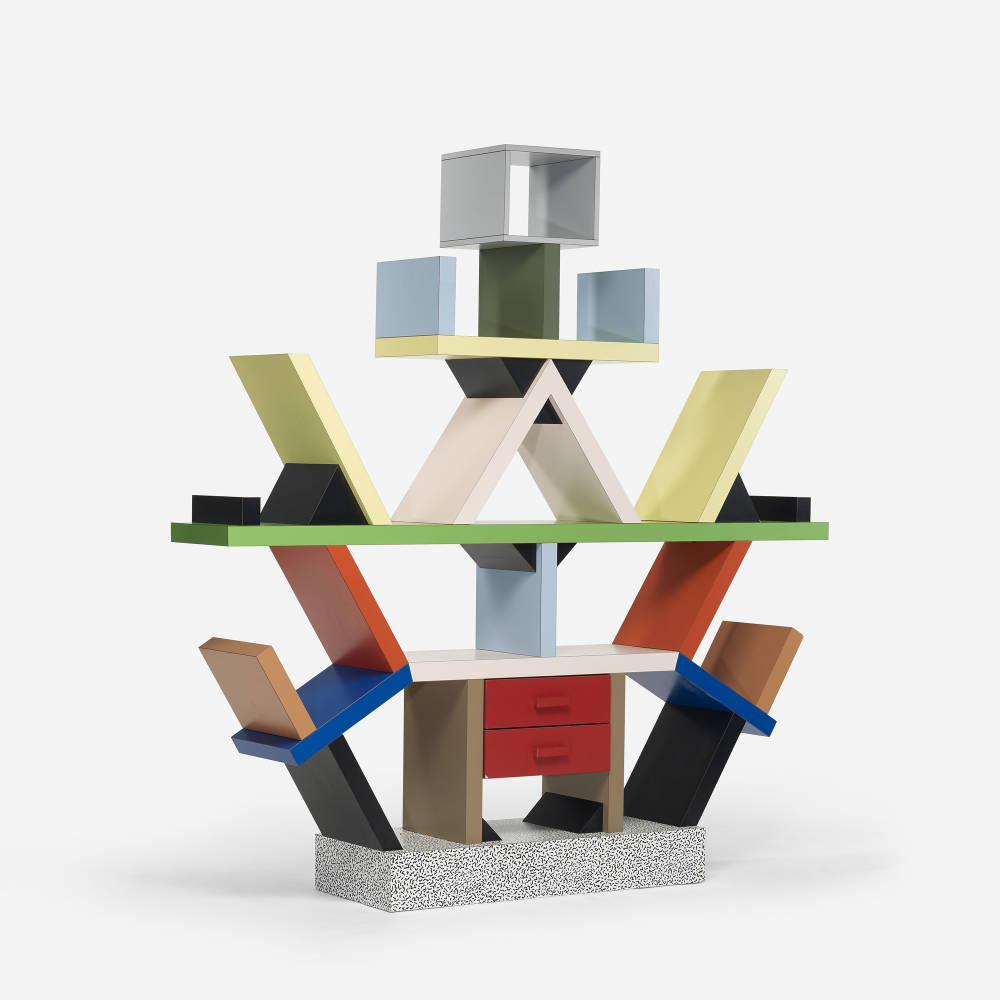
Ettore Sottsass
Carlton Bookshelf, 1981
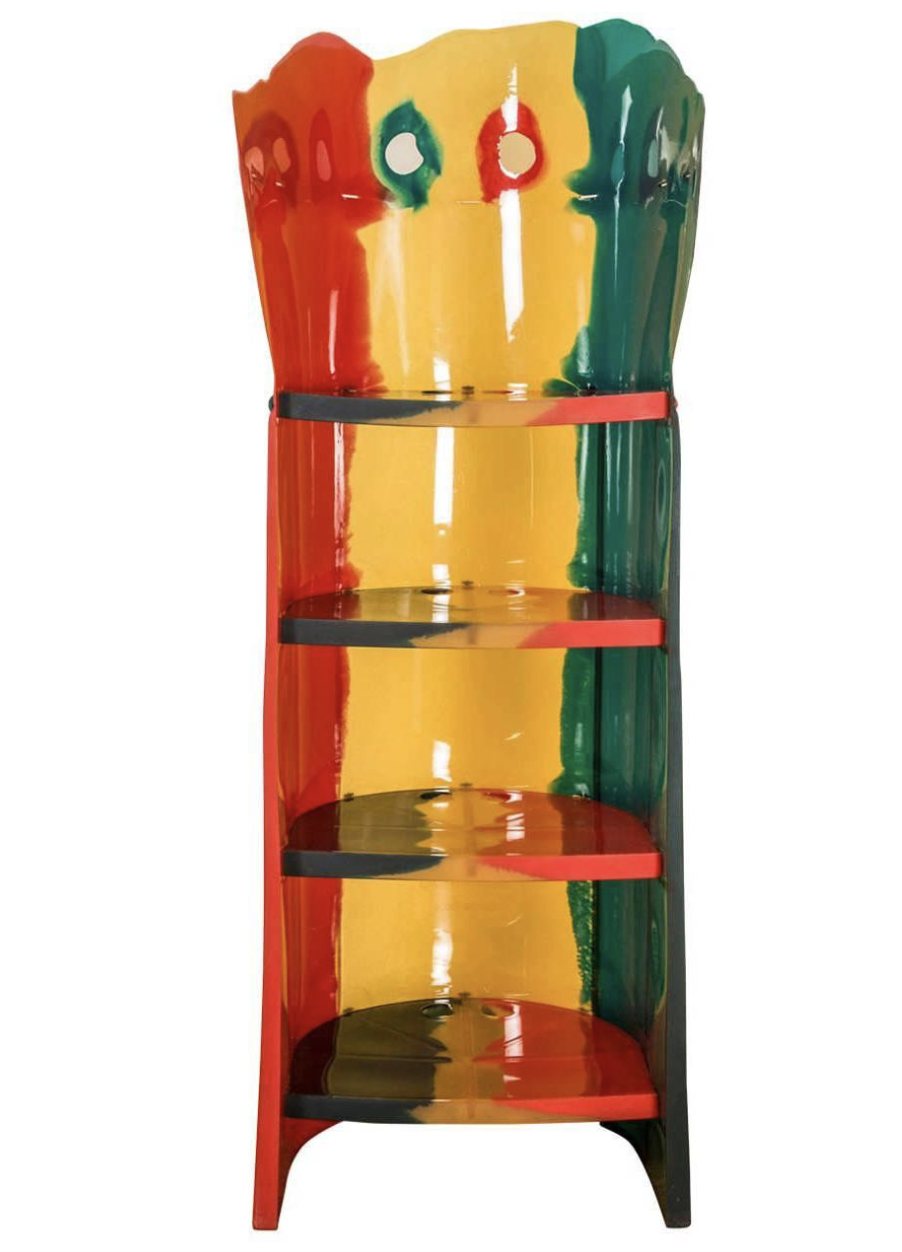
Gaetano Pesce
Nobody's Perfect Bookcase

Gaetano Pesce
Nobody's Perfect Bookcase
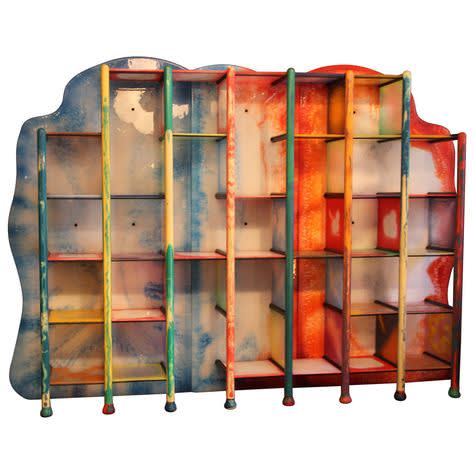
Gaetano Pesce
Nobody's Perfect, Sideboard Bookcase
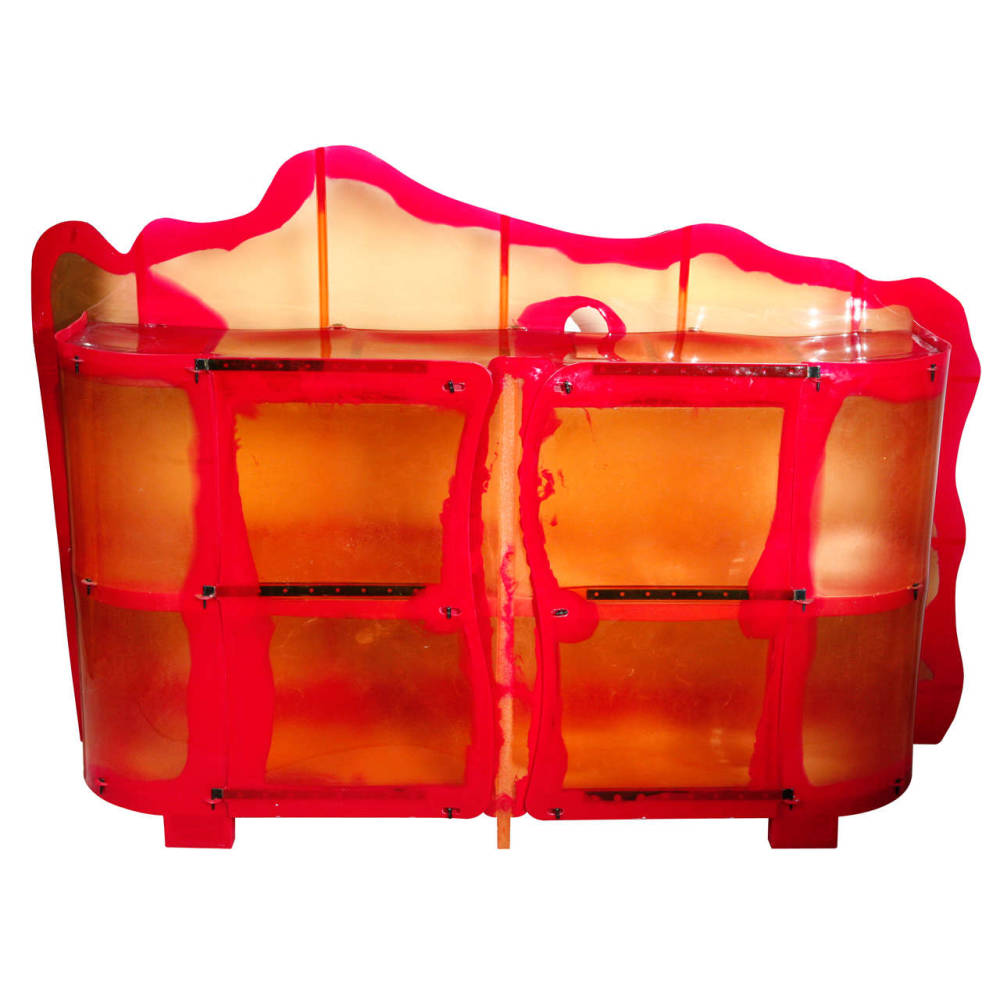
Gaetano Pesce
Nobody's Perfect Bookcase
The incorporation of books in art has lead to countless creative opportunities, from modifying the structure of the book itself, to using its likeness as an accessory, to creating unique spaces to display them. While books can be a form of art in their own right, they have also inspired creatives from all mediums to push their work further, to develop new ideas and methods, and to continue to express themselves.
